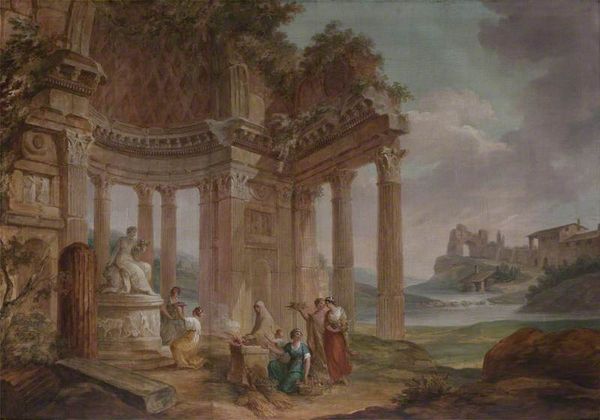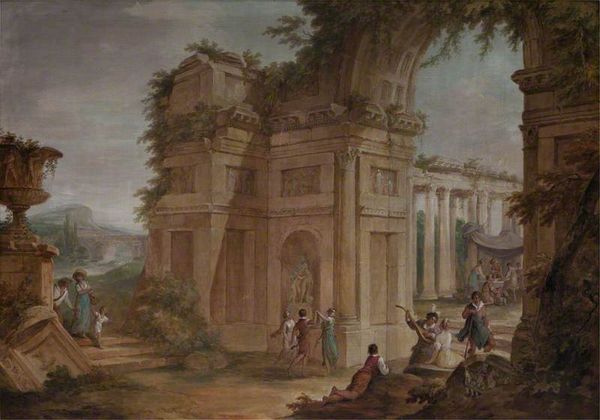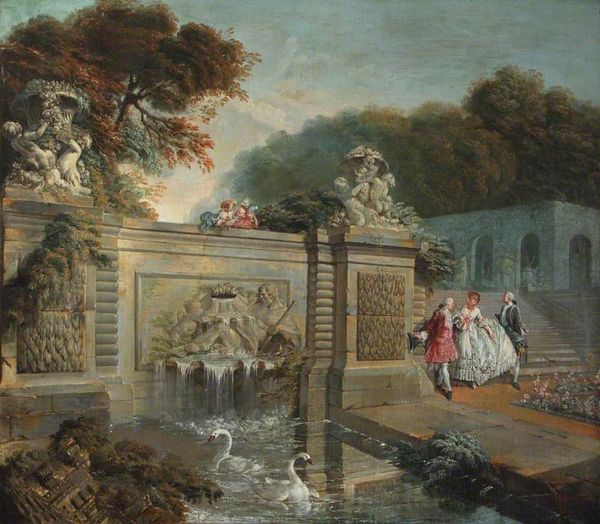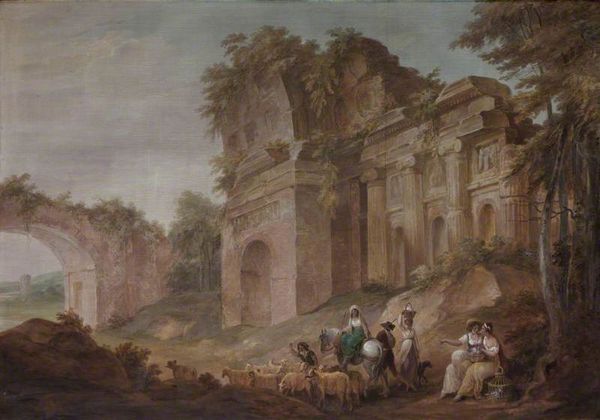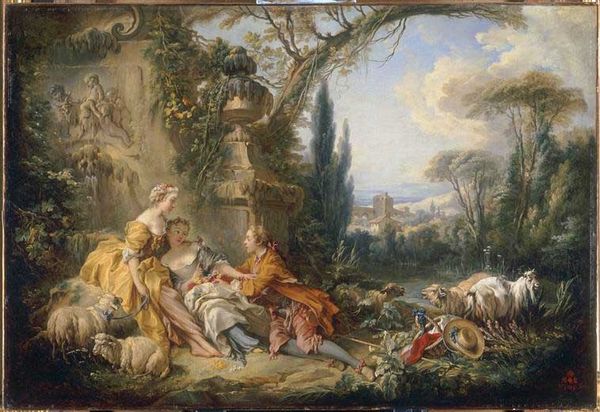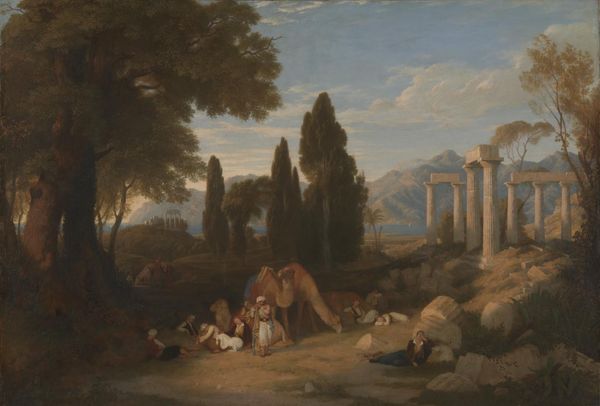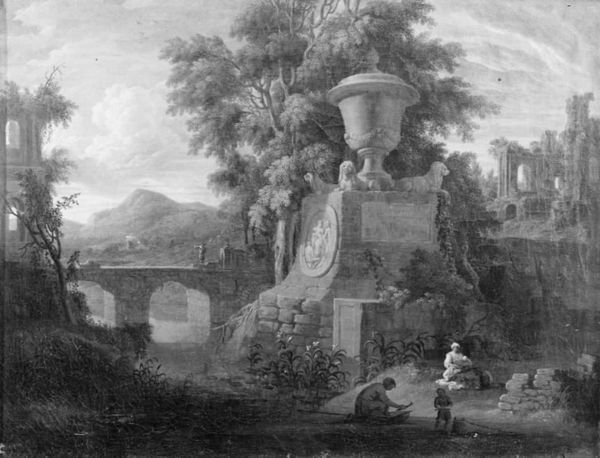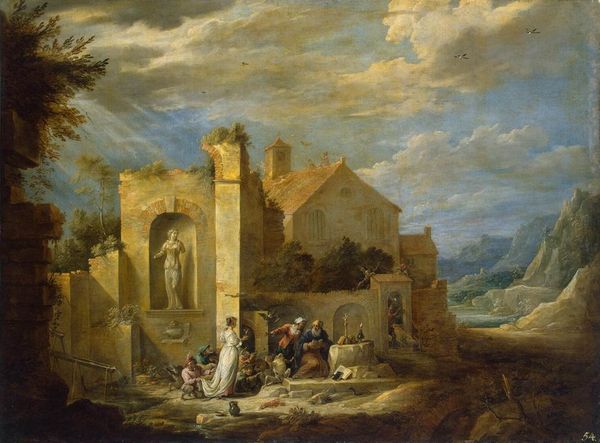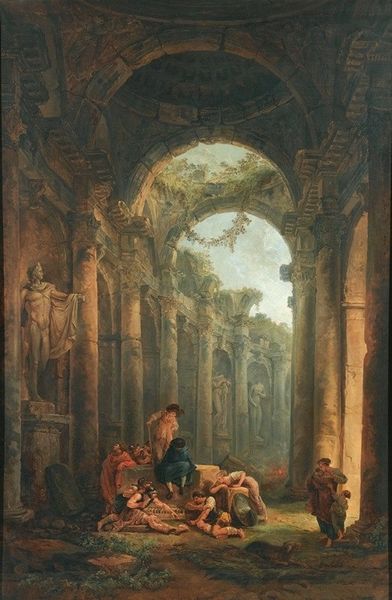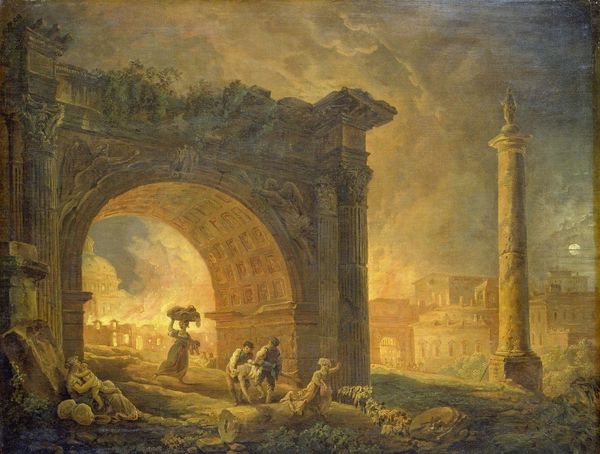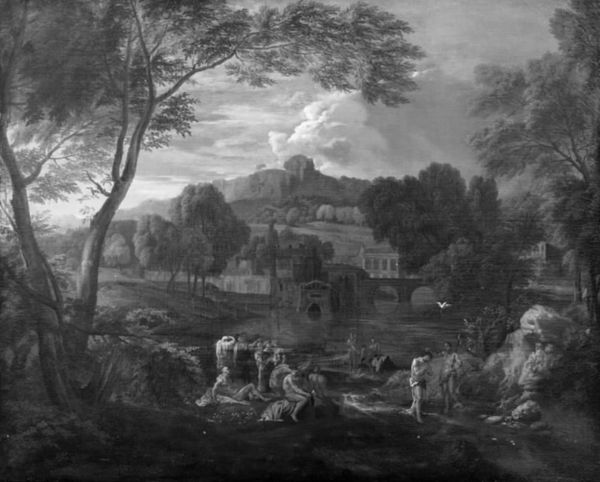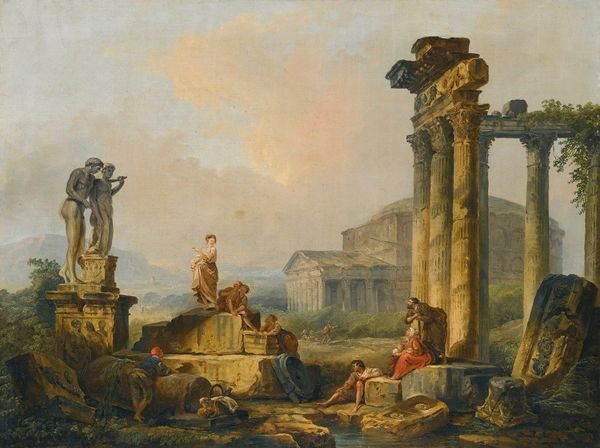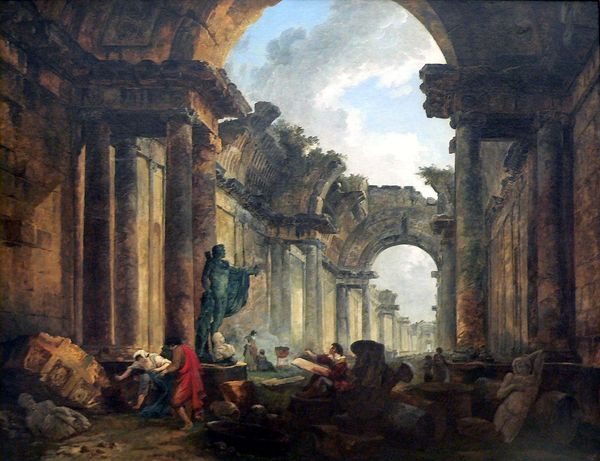
painting, oil-paint
#
neoclacissism
#
painting
#
oil-paint
#
landscape
#
oil painting
#
genre-painting
#
history-painting
#
academic-art
Copyright: Public domain
William Hamilton created this capriccio, or architectural fantasy, in oil paint sometime in the late 18th century. At first glance, the application may seem straightforward, but consider the cultural context: oil paint was becoming increasingly industrialized at this time, tied to wider systems of extraction, labor, and global trade. Hamilton would have purchased his pigments ground by others, then built up thin layers of paint to achieve the scene before us. Note the faded grandeur of the classical ruins, an aesthetic then very much in vogue. The rough, textural brushwork gives the painting depth and evokes the weight and age of the stones, overgrown with vegetation. By depicting an idealized scene of figures amongst the ruins, Hamilton evokes a sense of nostalgia for a bygone era, but it's also a testament to the enduring appeal of the classical world in an age of rapid change. Paying attention to materials, making, and context is essential to understanding the full meaning of any artwork, even a painting like this one.
Comments
No comments
Be the first to comment and join the conversation on the ultimate creative platform.
